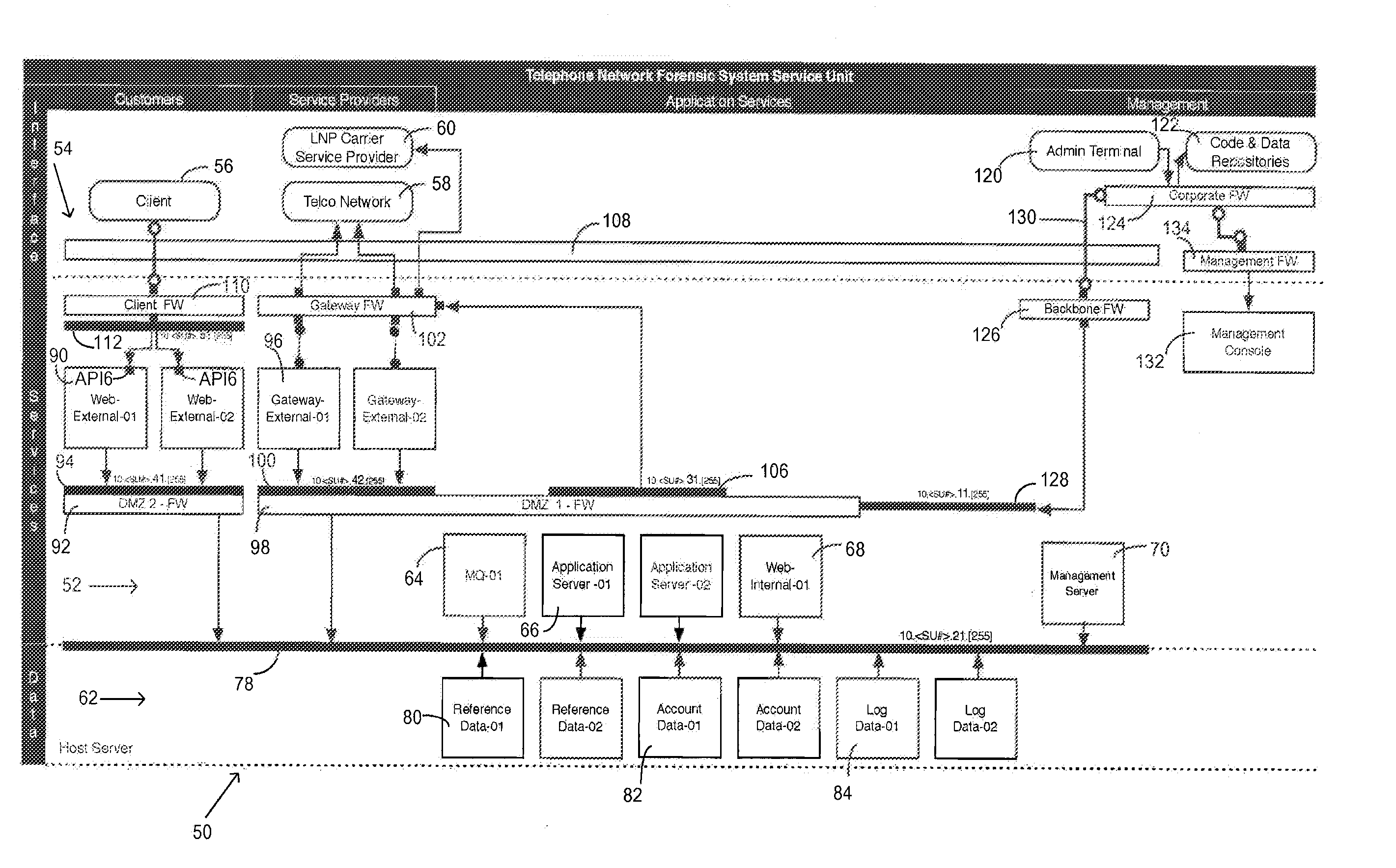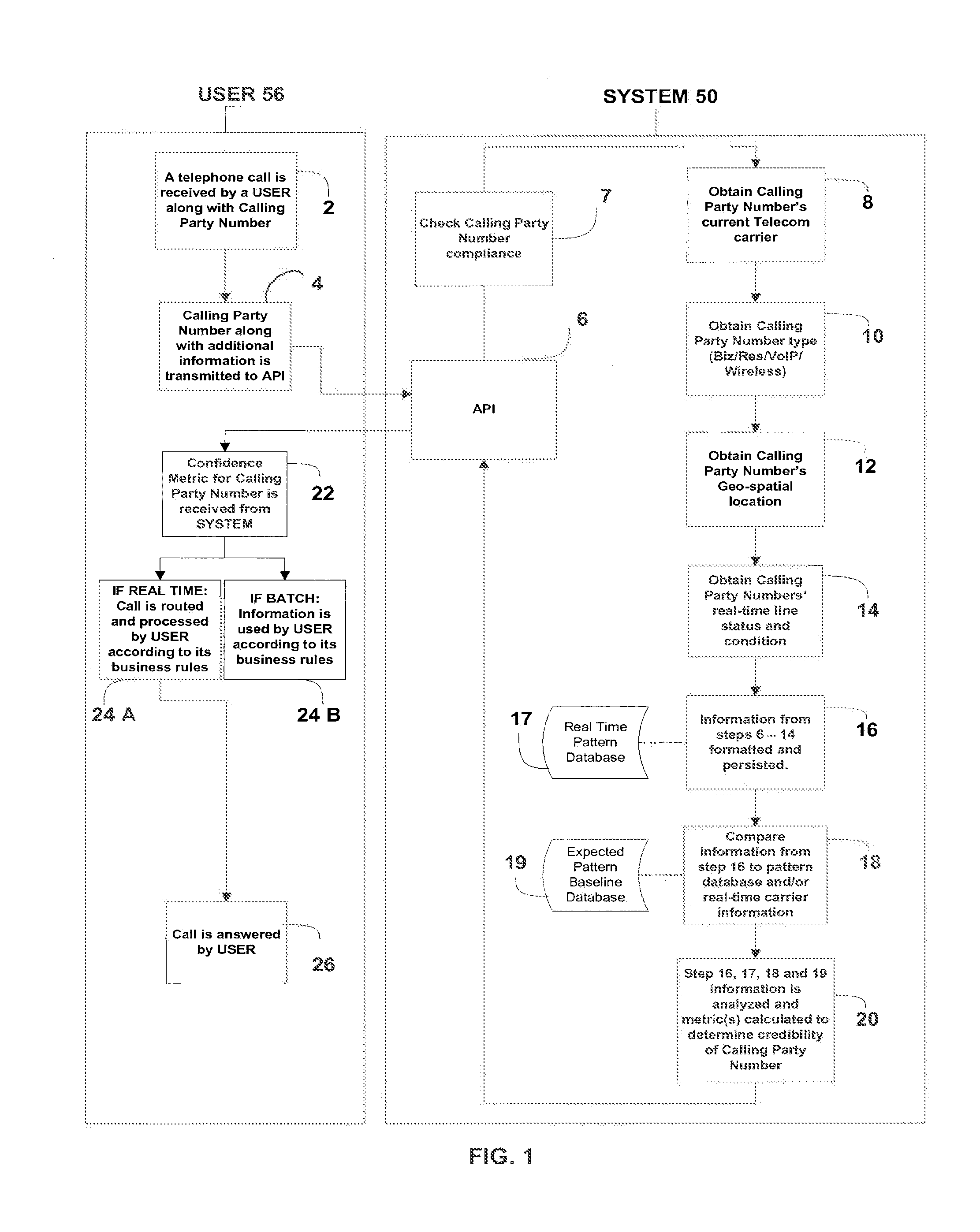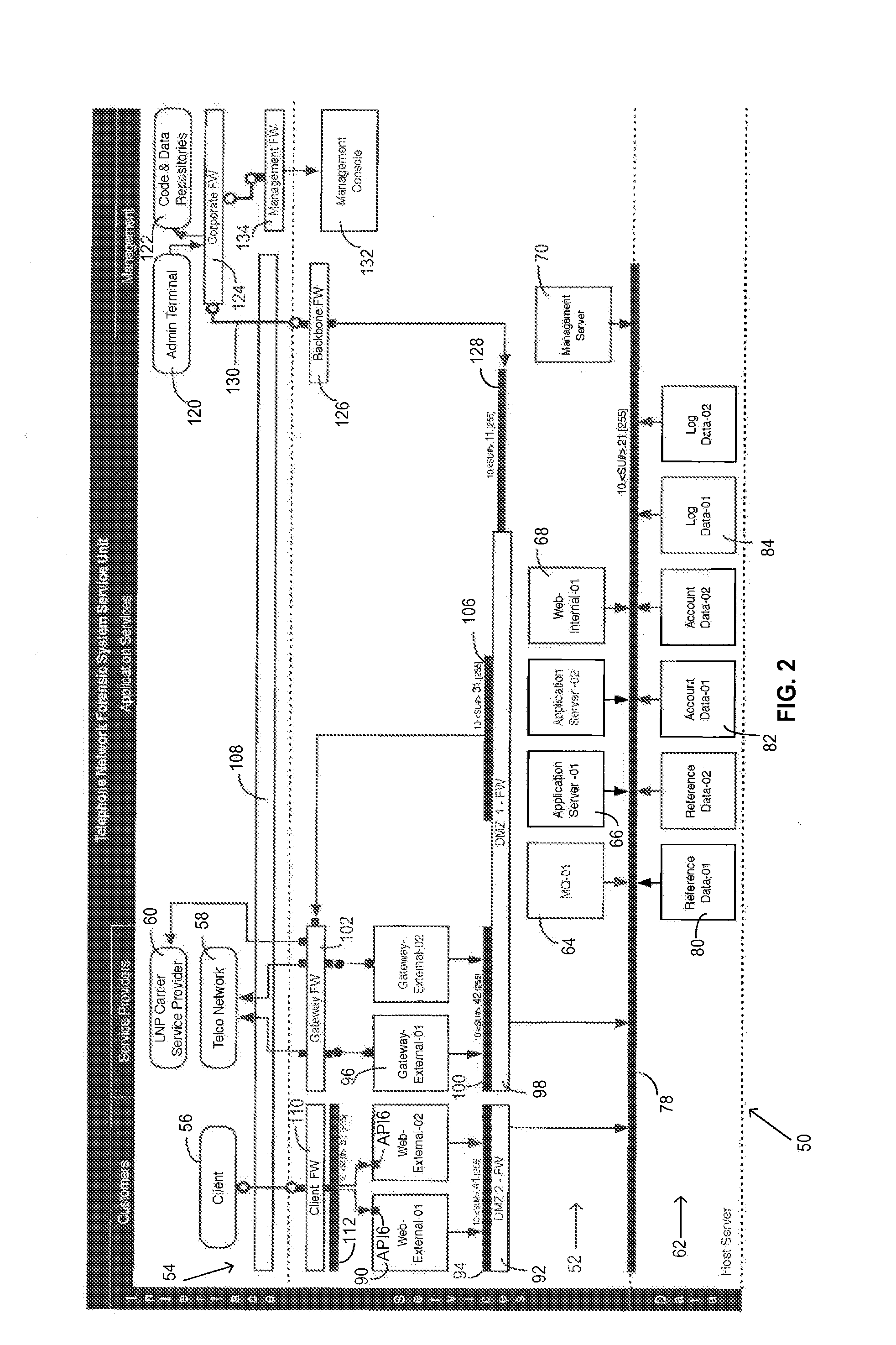Method of and System for Discovering and Reporting Trustworthiness and Credibility of Calling Party Number Information
a calling party and information technology, applied in the field of calls, can solve the problems of major financial institutions compromising critical operations, relying on non-validated ani, and affecting the marketing, technical and security processes of critical organizations. and other problems, to achieve the effect of reducing the risk of loss of revenue, reducing the risk of fraud, and reducing the trustworthiness of calling party information
- Summary
- Abstract
- Description
- Claims
- Application Information
AI Technical Summary
Benefits of technology
Problems solved by technology
Method used
Image
Examples
Embodiment Construction
[0027]In telephony, the calling party number information is delivered and described in many different ways. This document uses the acronym “ANI” to describe the following types of calling party number information systems and descriptions, unless any one of the following terms needs to be used specifically to communicate clearly: Caller ID or CID; Calling Party Number or CPN; Calling Number Identification (Identifier) or CNID; Calling Party Identification (Identifier) or CPI; Automatic Number identification (Identifier) or ANI; Automatic Number Identification Information Digits or ANI II, ANI 2, ii digits; Billing (Billed) Number or BN; Caller (Calling) Line Identification or CLID; A-Number; and Calling Party or CP. The term “call” is used in this document to define any connection over a telecommunications or an information service network and includes, but is not limited to, landline, wireless, modem, facsimile, Session Initiation Protocol (SIP), and Voice over Internet Protocol (Vo...
PUM
 Login to View More
Login to View More Abstract
Description
Claims
Application Information
 Login to View More
Login to View More - R&D
- Intellectual Property
- Life Sciences
- Materials
- Tech Scout
- Unparalleled Data Quality
- Higher Quality Content
- 60% Fewer Hallucinations
Browse by: Latest US Patents, China's latest patents, Technical Efficacy Thesaurus, Application Domain, Technology Topic, Popular Technical Reports.
© 2025 PatSnap. All rights reserved.Legal|Privacy policy|Modern Slavery Act Transparency Statement|Sitemap|About US| Contact US: help@patsnap.com



